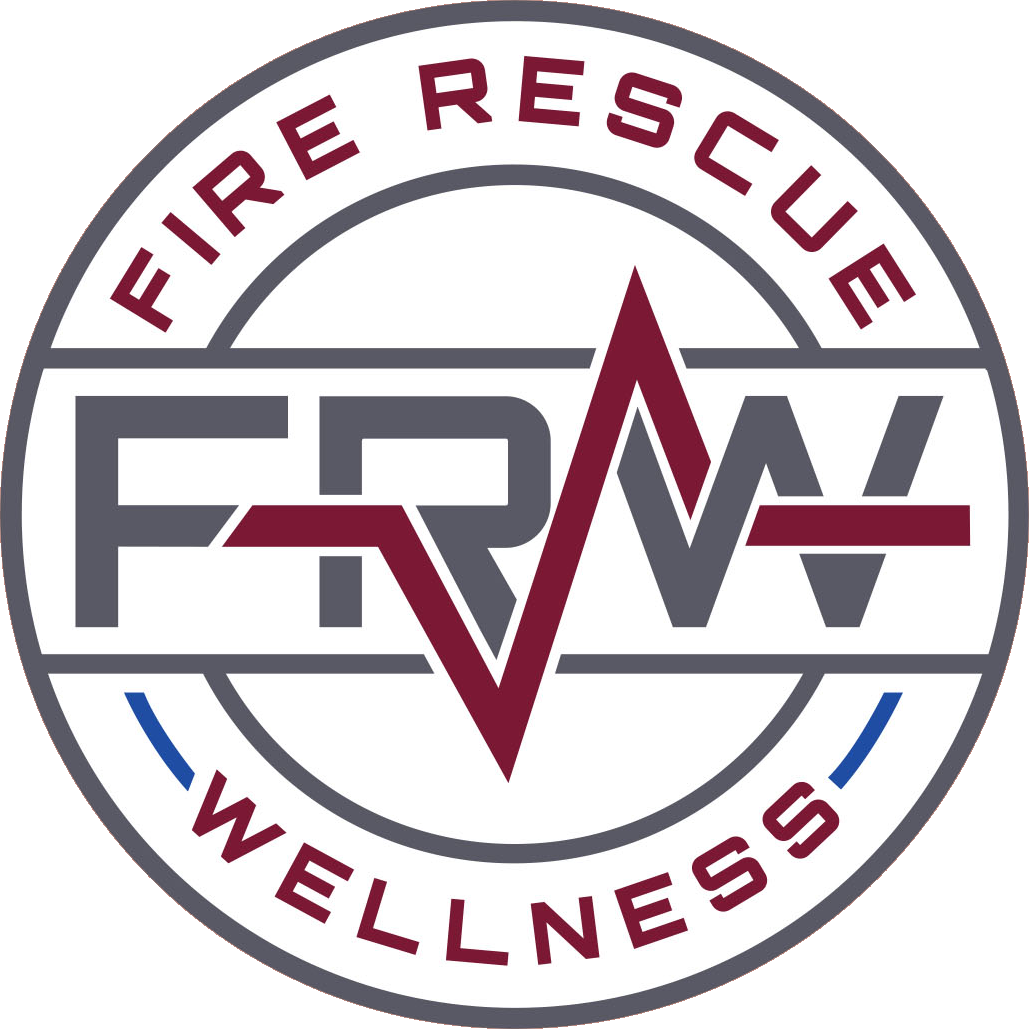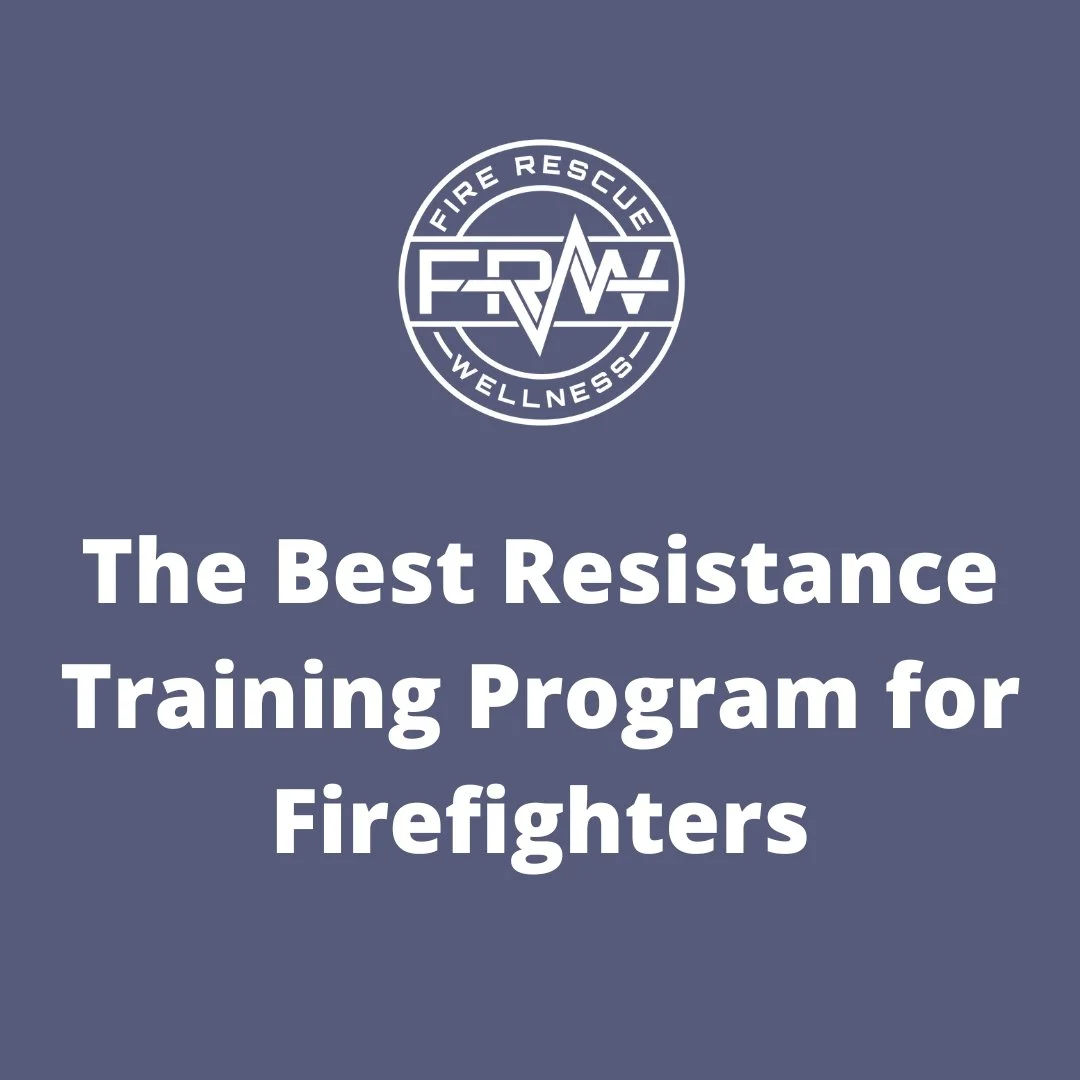The Best Resistance Training Program for Firefighters
I don’t believe in flashy click-baity programming, so what follows is my thought process and framework for creating reliable strength training programs for firefighters, considering overall wellness, health, fitness, and performance.
Is it the best? I don’t know, but it’s effective and accounts for the demands of the job.
Firefighting is not a sport, but as one of the most physically demanding and arduous jobs out there, we need to think about training more like an athlete and less like someone chasing aesthetics.
There’s no way to “fake it ‘til you make it” when trying to drag a charged hoseline up two flights of stairs in a hoarder house or yeeting a slippery 400-pound human out of a bathtub.
That said, many firefighters who take their training seriously still don’t think of their programming as an opportunity to build durability and job-specific performance capability.
If your training leaves you feeling broken down, sore for days, and unable to recover between shifts, it likely isn’t helping you on the fireground.
And if your training looks primarily like body-building splits (International Chest Day, anyone?!?), you’re missing out on weaponizing your physiology to improve your fireground performance.
Here’s the problem: too many firefighters treat the gym as a punishment chamber.
They chase exhaustion instead of adaptations. They confuse long, complicated workouts with effectiveness.
The main goal of each session is to be hot, sweaty, and tired, but then they wonder why nagging injuries pile up or why they can’t stay consistent when the job already robs them of sleep and recovery.
The truth is pretty straightforward: you don’t need complicated strength training programming or two-hour workouts to be effective.
What you need is a simple framework that respects the demands of firefighting, including muscular strength, endurance, and power, mobility, and stability throughout the chain, and a trunk that functions optimally.
Research has shown that consistent, moderate training doses improve strength, reduce injury risk, and support cardiovascular health far better than occasional “crush yourself” sessions (Peterson et al., 2005; Steele et al., 2017).
My philosophy when it comes to workouts and training sessions for firefighters?
Train the essentials, dose appropriately, and leave the circus tricks off of your training playbook entirely.
My 5-Pillar Resistance Training Framework
Pull and hinge
Push and squat
Carry heavy things
Mobility and stability-throughout the system, and don’t forget the ‘core’
Sprinkles (the extras)
When I’m building a program, I’m not thinking, “How do I fit bench press in here?”, I’m thinking “What upper body pushing exercise makes sense for not only the adaptations I’m seeking, but for firefighter health and performance?”
I tend to take a more holistic or whole-body approach to programming rather than designing a chest and shoulder day or a lower body day.
When I look at firefighter schedules as well as minimum effective doses for resistance training, coupling pull with hinge and push with squat patterns flows well for me.
Pull and Hinge
Nearly half of all firefighter injuries come from overexertion or musculoskeletal strain, especially in the lower back (U.S. Fire Administration, 2020). That means hinging and pulling should be a top priority.
Pulling movements build the back musculature and grip strength needed to haul equipment and control charged lines. The hinge pattern addresses the posterior chain, so your spine is supported when lifting loads.
Exercises to try:
Deadlifts (conventional, trap bar, or kettlebell)
Romanian deadlifts
Kettlebell swings
Pull-ups or assisted pull-ups
Dumbbell or barbell rows
Sled drags or rope pulls
Think of it this way: squats and lunges will help you get up the stairs, but hinges and pulls are what let you bring the gear and the victim back down.
Push and Squat
If hinging and pulling keep you in the game, pushing and squatting keep you moving forward. Pressing strength is what allows you to force open a door, push debris out of the way, or raise a ladder from the ground. Squats build the legs and hips that power you up stairwells, carry you across uneven ground, and let you pick up and move a victim without folding in half. Keep in mind that lower-body strength is strongly tied to occupational performance in firefighters (Rhea et al., 2004).
Exercises to try:
Front or back squats
Goblet squats
Step-ups or split squats
Push-ups (standard, deficit, weighted)
Bench press or dumbbell press
Landmine press (tends to be less ‘pinchy’ for firefighter shoulders)
Carry Heavy Things
This one does not need much explaining. Firefighters carry things: air packs, ladders, hose bundles, tools, and victims. Training should reflect that reality. Loaded carries develop grip, trunk stability, and strength that translate to job performance in a way almost nothing else does. If you can carry two heavy objects across the bay floor without looking like you’re about to collapse, you can probably make it across a front yard with irons and a saw.
Exercises to try:
Farmer’s carries (dumbbells, kettlebells, trap bar)
Suitcase carries (one side only)
Sandbag carries (bear hug or shoulder)
Overhead carries (lighter load, significant core demand)
Research shows grip strength and trunk stability are closely linked to reduced injury risk and overall functional capacity, at least in children (Wind et al., 2010). Plus, carries require very little coaching. Pick it up, walk with it, set it down without smashing your toes. Done.
Mobility and Stability
Turnout gear is basically a stiff and cumbersome snow suit (think of the little kid in A Christmas Story) that fights against you from every angle. It restricts your shoulders, hips, and even your thoracic spine. If you don’t work on mobility and stability, the gear will expose your weak spots.
Mobility keeps you moving into the ranges you need: raising an axe overhead, crawling through tight spaces, squatting to grab a patient. Stability keeps you from folding when you get there.
Exercises to try:
Shoulder dislocates or band pull-aparts for shoulder mobility
Hip openers (couch stretch, pigeon stretch)
Controlled articular rotations (CARs) for shoulders, t-spine and hips
Core mobility drills (chops, planks with rotation, rotational ball slams)
Core stability drills (planks, side planks, Pallof press)
Single-leg balance with reach
Poor mobility is tied to higher injury risk in tactical populations (Harbeson et. al., 2023). A few minutes of focused work each session is a much better investment than weeks on light duty.
The Sprinkles
This is where many firefighters go wrong. They confuse sprinkles for the cake. High-intensity circuits, novelty workouts, and conditioning challenges are fun, but they are not the foundation.
Think of conditioning as seasoning. It should add flavor, not dominate the dish.
If you are sleep deprived and already sore from the basics, adding a 45-minute burner circuit is not making you more “fire ready.” It is just digging the hole deeper.
Exercises to sprinkle in (when energy and recovery allow):
Sprints or intervals on the bike/rower
400-meter running repeats
Battle ropes
High-intensity functional training
Crawls, sled pushes, or tire flips
Overtraining combined with poor sleep impairs reaction time, immune function, and strength gains (Fullagar et al., 2015). Translation: if you think running yourself into the ground makes you tougher, the science says otherwise.
Training Philosophy for Firefighters: Minimum Effective Dose and Honoring Your Body
Firefighting is shift work. That means you will be training tired, sometimes underfed, and often after a night that was not restful. Ignoring this reality is a recipe for injury and burnout.
The goal should be the minimum effective dose: the smallest amount of training needed to stimulate adaptation. For strength and muscle, even two to three focused sessions per week can be enough to make meaningful progress (Grgic et al., 2018). More is not always better, especially when your job already demands irregular hours and high stress.
Honoring your body means paying attention to the signals. If you just came off a 24 where you had three fires and no sleep, maybe today is not the day for heavy deadlifts. It might be the day for mobility, light carries, or a short pull-squat circuit. The win is not crushing yourself. The win is training consistently without breaking down.
Conclusion
The best training style for firefighters is not flashy, it is not extreme, and it does not require reinventing the wheel. Unfortunately, it also isn’t likely to get a ton of likes, comments and shares on IG. For me, it comes down to five pillars: pull and hinge, push and squat, carry heavy things, train mobility and stability, and sprinkle in the extras when it makes sense.
The science is clear. Prioritizing strength, movement quality, and recovery keeps firefighters healthier, reduces injury, and sustains careers.
Where to Get Help for Firefighter Workout Program Development
For Fire Departments
If you’re looking for more on firefighter fitness, education, wellness coaching, and consulting for fire departments, I’d love to help.
As a retired firefighter and a biochemist by degree, a strength and conditioning professional and nutritionist by credential, I understand the needs of the fire department as a whole and the demands of the firefighters within your department. I see you, I hear you, I am you. You can learn more about me here.
I help fire departments develop initiatives to bolster the health and wellness of firefighters by improving their sleep, nutrition, mental and physical health, and decreasing their mortality risk factors.
I offer coaching calls and customized department solutions. The best way to get started is to schedule a consulting call or contact me.
For Firefighters
If you are looking for specific program design as an individual, get started by reaching out and submitting a contact form. I'd love to chat more about your needs as a firefighter and what a specific program for you can look like.
Join the Fire Rescue Wellness Newsletter Family
Whether you’re a firefighter focused on your own health or a department leader looking out for your crew, you’ll get practical wellness tips, department-ready guides, and exclusive resources delivered straight to your inbox.
Next on your reading list:
For further reading:
Grgic, J., Schoenfeld, B. J., Davies, T. B., Lazinica, B., Krieger, J. W., & Pedisic, Z. (2018). Effect of resistance training frequency on gains in muscular strength: a systematic review and meta-analysis. Sports Medicine, 48(5), 1207-1220.
Fullagar, H. H., Skorski, S., Duffield, R., Hammes, D., Coutts, A. J., & Meyer, T. (2015). Sleep and athletic performance: the effects of sleep loss on exercise performance, and physiological and cognitive responses to exercise. Sports medicine, 45(2), 161-186.
Harbison, S., Melton, B. F., Hunt, N., Henderson, N., Adams, B., & Westrick, R. (2023). The relationship between physical mobility and firefighter occupational task performance. International journal of exercise science, 16(3), 1216.
Peterson, M. D., Rhea, M. R., & Alvar, B. A. (2005). Applications of the dose-response for muscular strength development: a review of meta-analytic efficacy and reliability for designing training prescription. The Journal of Strength & Conditioning Research, 19(4), 950-958.
Rhea, M. R., Alvar, B. A., & Gray, R. (2004). Physical fitness and job performance of firefighters. The Journal of Strength & Conditioning Research, 18(2), 348-352.
Steele, J., Fisher, J., Skivington, M., Dunn, C., Arnold, J., Tew, G., ... & Winett, R. (2017). A higher effort-based paradigm in physical activity and exercise for public health: making the case for a greater emphasis on resistance training. BMC Public Health, 17(1), 300.
U.S. Fire Administration. (2020). Firefighter injuries, 2010–2019. Federal Emergency Management Agency. https://www.usfa.fema.gov
Wind, A. E., Takken, T., Helders, P. J., & Engelbert, R. H. (2010). Is grip strength a predictor for total muscle strength in healthy children, adolescents, and young adults?. European journal of pediatrics, 169(3), 281-287.

